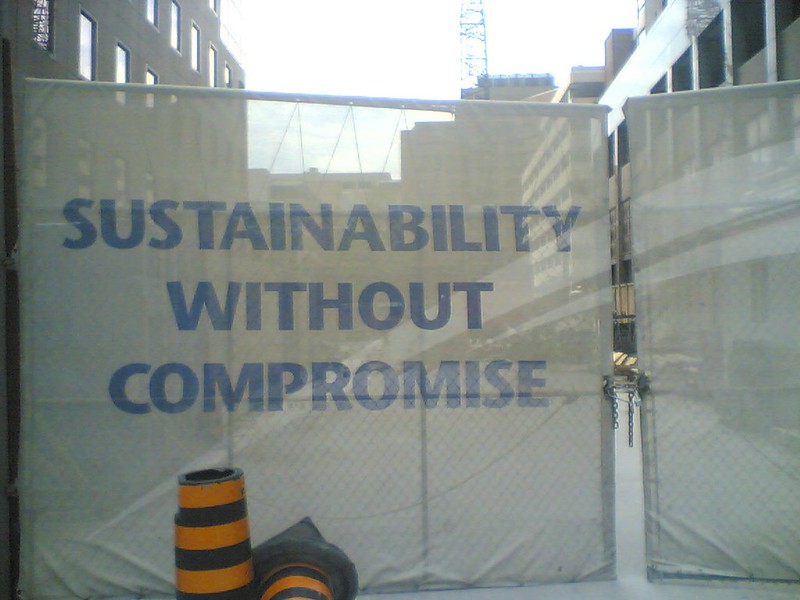In my previous blog the state of supply chain sustainability in real estate was discussed based on the latest report of Massachusetts Institute of Technology (MIT). Included in the blog was a poll question to hear your opinion about the state of supply chain sustainability of the real estate industry compared to other industries. Most of the respondents (72,48%) indicated that the real estate industry scores lower than other industries.

Arguments for this lower score are that the real estate industry is a very fragmented industry where every building is relatively unique, capital intensive, composed of many different components which are put together on site and the management of buildings during the life cycle is organized in various ways depending on the ownership and use.
The second poll question was based on the key finding by the World Economic Forum that in the current real estate supply chain financial returns have overshadowed community needs and often tenant needs. 94,44% of the respondents confirm that a better implementation of community needs and tenant needs can create a more sustainable real estate supply chain.

To enhance the supply chain sustainability of the real estate industry it is useful to understand what practices are or can be applied. In this blog three supply chain sustainability models shall be presented. However before presenting these three models it is important to understand that supply chain sustainability is a relative concept. The concept is about long term, multi-dimensional and fundamental transformation processes towards sustainability, which is a relative measure as it can be subject to interpretation and can change over time. Supply chain sustainability therefore is rather a journey than a destination.
To organize supply chain sustainability depends on different factors. Gosling et al. (2016) presented three models on supply chain sustainability:
- Reactive strategy
Results are achieved through the implementation of sustainability codes of conduct with a focal company using assessment to measure the results. Relationships and leadership is transactional, learning is single-loop and the outcome finally leads to the compliance of sustainability codes of conduct. - Contributive strategy
In this strategy there is involvement by both focal company and suppliers, with activities beyond codes of conduct, such as training and developing suppliers in sustainability initiatives by focal companies. The initiatives can be provided by the focal company or a supplier, or by other organizations such as industry regulators or NGOs. However the focal company leads the process, with the involvement or participation of suppliers together to create a sustainable supply chain. Single-loop learning plus is embedded in the process and leads to beyond compliance sustainable performance and continuous improvements. Relationships and leadership can be transactional and/or transformational. - Pro-active strategy
This strategy is about collaboration or joint efforts between focal companies and suppliers and between focal companies and customers. Double-loop learning is embedded in the process and leads to new practices or supply chain sustainability innovation. It is suggested that focal companies take a transformational leadership approach in influencing their suppliers in a way that the stronger a transformational supply chain leadership style is, the stronger the likelihood that collaboration leads to double-loop learning.
How would you characterize the strategy towards supply chain sustainability in your practice?
If you have any further comments please let me know in the comment field or discuss in the open LinkedIn Group: Future of Real Estate Investments. In the next blog more insight is given in sustainability supply chain learning based on the new article by Cormack et al. in the October issue of the Journal of Cleaner Production.
Literature
Cormack, A., Thomé, A. M. T., & Silvestre, B. (2021). An integrative conceptual framework for supply chain sustainability learning: A process-based approach. Journal of Cleaner Production, Volume 320, October 2021, 128675.
Gosling, J., Jia, F., Gong, Y., & Brown, S. (2016). The role of supply chain leadership in the learning of sustainable practice: toward an integrated framework. Journal of Cleaner Production, 137, 1458-1469.
Photo by sillygwailo on Foter


One thought on “Supply Chain Sustainability in Real Estate (Part Two)”